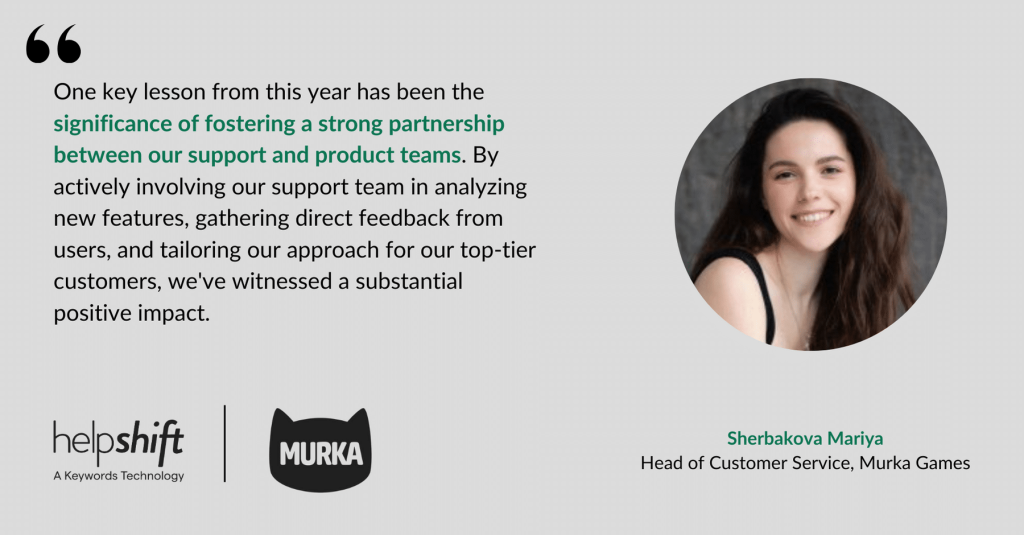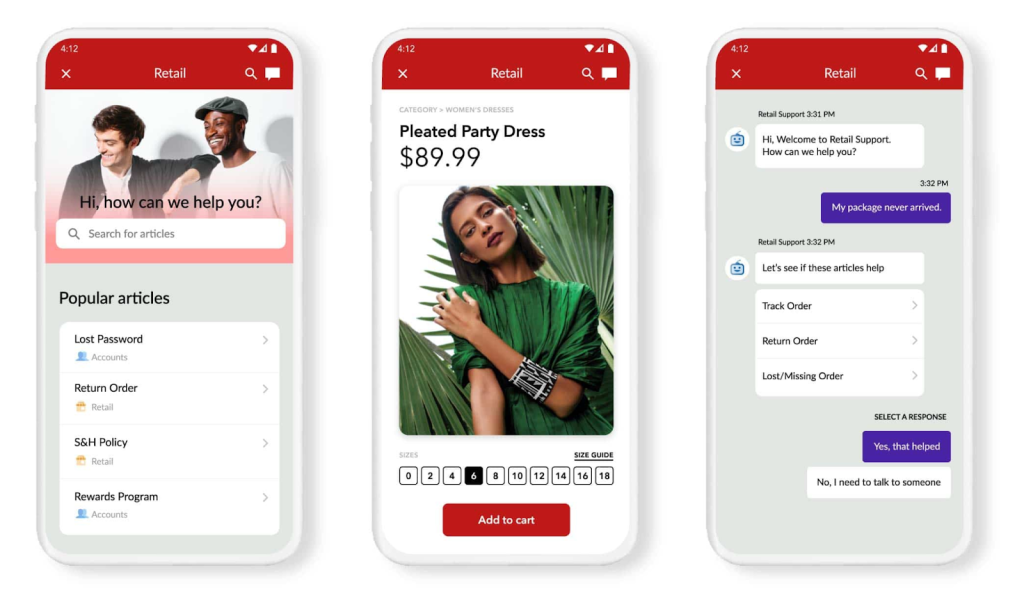First Off, What Is A Chatbot?
There’s a lot of chatter about chatbots today, but the concept of a chatbot is really nothing new. Over the last 50+ years, the chatbot has significantly evolved with greater accuracy and diversity of use cases across industries. But at face value, a chatbot is a computer program that simulates human conversation. Chatbots can be auditory or text-based, with the latter becoming increasingly popular as seen on platforms like Facebook Messenger and for companies with web-based sales and support.
The customer service chatbot is a unique subset of the chatbot ecosystem. Its purpose is not to sound human, make smalltalk, or pass the Turing test — rather, it’s to rapidly lead customers through a streamlined channel of information as efficiently as possible. So unlike other bots — say Tay or Evie — customer service chatbots do not need to learn how to actually chat with a sophisticated level of comprehension; they just need to make the customer inquiry process more efficient (and pleasant) than it currently is.
Considering that most Americans currently dread contacting customer service, this isn’t exactly a high bar to surpass. That, combined with the fact that customer service chatbots are much more mature and ready for deployment than many other forms of human-like AI, makes chatbot implementation a no-brainer.
Why We Need Chatbots In Customer Service
The customer service chatbot provides a solution to a two-tiered problem:
- Scalability: Personalized interactions are challenging to support at scale
- Speed: Customers expect instant service
Both of these problems are uniquely human. Live agents are expensive and difficult to fully staff at scale, and are slow to respond even when there are enough agents on the clock. Not offering chat because of this, however, is not a good option: 29 percent of consumers are more likely to make a purchase with the option of live chat even if they don’t use it, and 79 percent of customers say they prefer live chat to other forms of customer service. This is where bots come in.
According to recent Propeller Survey on behalf of Helpshift, more than 37 percent of customers say they would prefer to get immediate assistance from a chatbot over waiting just three minutes for a human, and 55 percent of customers say they would welcome the idea of chatbots in the customer service process. It’s easy to see why: bots respond instantaneously and can use prompt buttons and keyword recognition to rapidly lead customers to an answer — making this feature the perfect solution.
Importantly, these bots are not mimicking conversation — rather, they are guiding customers through a series of steps to be either led to information, or led to an agent (who is then adequately equipped with information to quickly answer the customer’s query). Unlike humans, chatbots are consistent and highly scalable. Where a live agent might become stressed and distracted by a huge ticket influx (from, say, an app crash) the chatbot consistently responds immediately and in the same polite and straightforward manner—or whatever “voice” the company chooses to program.
This level of speed and consistency is crucial to maintain in a world where 73 percent of customers say that valuing their time is the most important thing a company can do to provide them with good online customer service. To help you get started, we’ve outlined when to utilize chatbots in the customer journey for maximum impact in terms of speed, CSAT, and scale.
An Example Customer Journey With Four Chatbots
A customer’s support journey should never start out with a human-human interaction. Not only can a bot collect basic information faster than a human can, but it can also instantly make decisions based on this information.
To give an example, say that a customer deleted his email with shipment tracking information and contacts customer service to retrieve the tracking number. The chatbot would immediately present options for issue classification from which the user could choose (e.g. “Shipping”, “Account Login”, “Payment Issues”, etc.). The user would select shipping, and the chatbot would present the user with his most recent orders and ask him to select one. The second the user selects the order, the chatbot would present options of potential problems with the order from which to choose — e.g. “Return Item”, “Shipment Tracking”, or “Problem with Item”. When the user selects “Shipment Tracking” the chatbot instantaneously gives the tracking number and latest shipment update.
Now, this is an example of an interaction in which a human agent was never necessary. While an agent should never begin the conversation, there should also be provisions for an option like “none of the above” in order to be routed to an agent when necessary.
The best customer service journeys are partially automated with easily accessible escape hatches for users to contact live agents.
The four different steps that can be automated are:
- Information Collection
- Guided Issue Filing
- Self-Service Suggestion
- CSAT Collection
There are the four types of chatbots that every customer service team should be using. Simple queries that can be addressed through self-service should only reach chatbots and never be routed to an agent. In more unique cases, however (or in cases where a customer simply wants to speak to an agent) the agent could enter at two points, as outlined below. The flow of your customer journey should progress as follows.
Step 1: Collecting Information
Much of an agent’s time is taken up with routine information collection. Thanks to simple but necessary questions like asking for name and account number, the agent oftentimes spends the bulk of an interaction just getting basic information to answer a question.
The information bot efficiently replaces the need for this step by asking users to enter their own information. Some bots will present button options for the user to select (iOS vs. Android, for example), while others can use natural language processing to identify the information. The bot can also suggest options — for instance, if customers say they want to return an item, the bot can present the last five items purchased and ask users to click on the one they want to return.
Step 2: Classifying Issues
Using artificial intelligence, a chatbot can also classify an issue with a high degree of accuracy. This step is extremely important, as it both allows the bot to deflect tickets through self-service suggestions, and helps route the issue to the correct agent in the event that ticket deflection does not work.
Step 3: Suggesting Knowledge Articles
This bot promotes self-service by suggesting knowledge base articles that address the user’s inquiry. For instance, if a user asks “where do I see my purchase history” the bot could suggest a knowledge base article (or even a gif or video explanation, depending on how robust your knowledge base is) showing where to find this information. If, on the other hand, the bot uses menu options, and the user selects “purchase history”, the bot could suggest four related articles such as “Where do I see my purchase history”, “Why is one of my items not showing on my purchase history”, “Return an item”, and “Check my refund status”.
This bot is particularly interesting because it learns and improves over time. After offering self-service options, the bot will let the user select whether or not the knowledge base article(s) were helpful. Over time, the bot improves its accuracy by gathering feedback from its users. It also will have the capability to offer significantly more nuanced answers so that users don’t have to parse through as much content to find a resolution.
Step 4: CSAT Collection
Regardless of whether the conversation has been entirely handled by bots or has been handed off to an agent, the CSAT collection bot should still be the last touch point between the customer and the company. Unlike traditional forms of feedback gathering (email surveys, for instance), the CSAT bot follows up immediately after customers have found what they’re looking for, and does so within the conversation thread. This encourages users to give feedback by removing the extra steps associated with most forms of survey collection.
How To Get Started With Chatbots
It’s likely that your customer service journey already looks very similar to the one outlined above, with the largest difference being that each step is handled manually by an agent. Automating aspects of this process will have these three effects. Chatbots will:
- Decrease ticket volume
- Improve time-to-first-response
- Improve CSAT ratings
Many top companies have already integrated chatbots into their customer service journey. In fact, according to that recent Helpshift survey, 48 percent of consumers have interacted with a chatbot in the past year for customer service inquiries, and 65 percent of millennials want chatbots involved in the customer service process.




